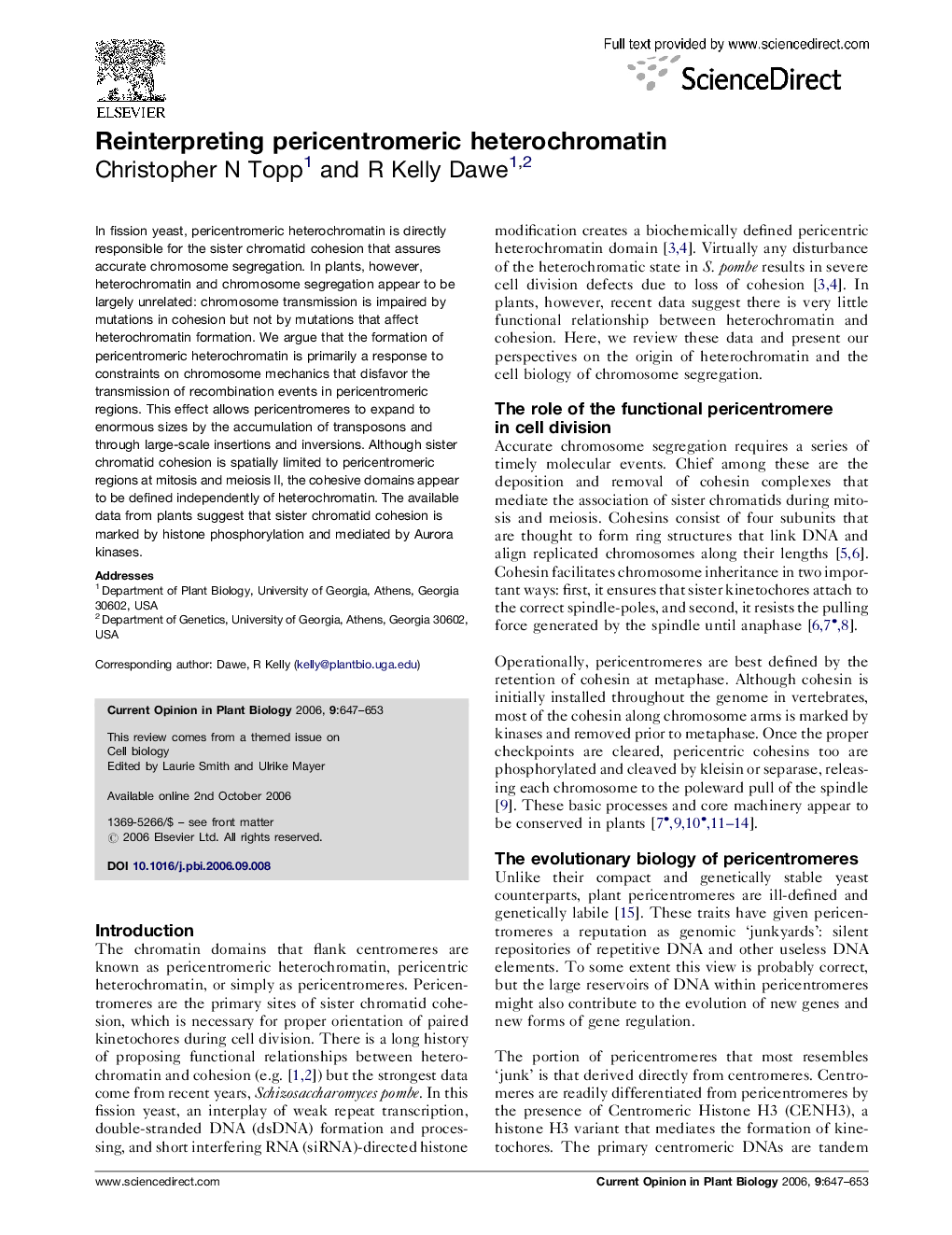| Article ID | Journal | Published Year | Pages | File Type |
|---|---|---|---|---|
| 2046088 | Current Opinion in Plant Biology | 2006 | 7 Pages |
In fission yeast, pericentromeric heterochromatin is directly responsible for the sister chromatid cohesion that assures accurate chromosome segregation. In plants, however, heterochromatin and chromosome segregation appear to be largely unrelated: chromosome transmission is impaired by mutations in cohesion but not by mutations that affect heterochromatin formation. We argue that the formation of pericentromeric heterochromatin is primarily a response to constraints on chromosome mechanics that disfavor the transmission of recombination events in pericentromeric regions. This effect allows pericentromeres to expand to enormous sizes by the accumulation of transposons and through large-scale insertions and inversions. Although sister chromatid cohesion is spatially limited to pericentromeric regions at mitosis and meiosis II, the cohesive domains appear to be defined independently of heterochromatin. The available data from plants suggest that sister chromatid cohesion is marked by histone phosphorylation and mediated by Aurora kinases.
